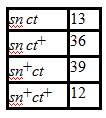Due to a mutation in a smooth muscle gene, the blood vessels in the skin of a certain strain of mouse become dilated when temperature falls below a certain point. Based on the likely outcome of this mutation, what precautions should the researchers take to maintain the health of their mice?
A. The mouse room should be maintained at a cooler than normal temperature.
B. The mouse room should be consistently maintained at a warm temperature.
C. The mice will have weak muscles, and should be provided with exercise wheels.
D. The mice will be susceptible to high blood pressure, and should not be provided with exercise wheels.
Clarify Question
What is the key concept addressed by the question?
What type of thinking is required?
Gather Content
What do you already know about mammalian body temperature? What other information is related to the question?
Choose Answer
Given what you now know, what information is most likely to produce the correct answer?
Reflect on Process
Did your problem-solving process lead you to the correct answer? If not, where did the process break down or lead you astray? How can you revise your approach to produce a more desirable result?
B. The mouse room should be consistently maintained at a warm temperature.
Clarify Question
What is the key concept addressed by the question?
· This question is asking about the effects of a mutation on the temperature-regulating ability of a mouse.
What type of thinking is required?
· Evaluate level:
o This question is asking you to weigh and judge, or evaluate, the consequences of a mutation in the blood vessels of a mouse on the ability of the mouse to maintain a healthy body temperature.
Gather Content
What do you already know about mammalian body temperature? What other information is related to the question?
· Mammals maintain a body temperature that stays within a narrow range around a set point.
· For humans, this set point is 98.6F.
· Body temperature in mammals is maintained by a negative feedback loop.
· When body temperature in a mammal begins to deviate from the set point, it is sensed and reported to the central nervous system.
· The central nervous system formulates a response that will bring the body temperature back to the set point.
· Vasoconstriction tightens the blood vessels and brings them toward the core of the body. This conserves body temperature in cold environments.
· Vasodilation widens the blood vessels and moves them closer to the surface of the body. This releases heat to the environment and aids the maintenance of body temperature in warm environments.
Choose Answer
Given what you now know, what information is most likely to produce the correct answer?
· Although exercise strengthens skeletal muscles, its effects on the smooth muscle of the blood vessels would not be significant in this example.
· Dilation of blood vessels, regardless of the cause, would lower blood pressure, not raise blood pressure.
· In the mutant mice, body temperature will fall rapidly due to positive feedback from heat loss when blood vessels are dilated, so cold temperatures might lead to hypothermia and must be avoided.
Reflect on Process
Did your problem-solving process lead you to the correct answer? If not, where did the process break down or lead you astray? How can you revise your approach to produce a more desirable result?
· Evaluate level:
o Answering this question correctly depended on your ability to weigh and judge, or evaluate, the dilation of blood vessels and the effect on body temperature. If you got an incorrect answer, did you remember that vasodilation releases heat from the body and lowers body temperature, or smooth muscle facilitates this vasodilation? Did you have trouble weighing the merits of blood vessel dilation to determine the correct answer?
You might also like to view...
Which one of the following is the derivative of vitamin A that absorbs light energy?
A. chlorophyll B. opsin C. retinal D. ommatida
What is the map distance between sn and ct?
In Drosophila, singed bristles (sn) and cut wings (ct) are both caused by recessive, X-linked alleles. The wild-type alleles (sn+ and ct+) are responsible for straight bristles and intact wings, respectively. A female homozygous for sn and ct+ is crossed to a sn+ct male. The F1 flies are interbred. The F2 males are distributed as follows:

A) 12 m.u.
B) 13 m.u.
C) 25 m.u.
D) 50 m.u.
E) 75 m.u.
phosphorus cycle
What will be an ideal response?
Match all applicable letters with the most appropriate term.
A. collenchyma B. sclerenchyma C. periderm D. pith E. stomata F. epidermis G. phloem H. parenchyma I. vascular cambium J. endodermis K. procambium L. amyloplast M. mesophyll